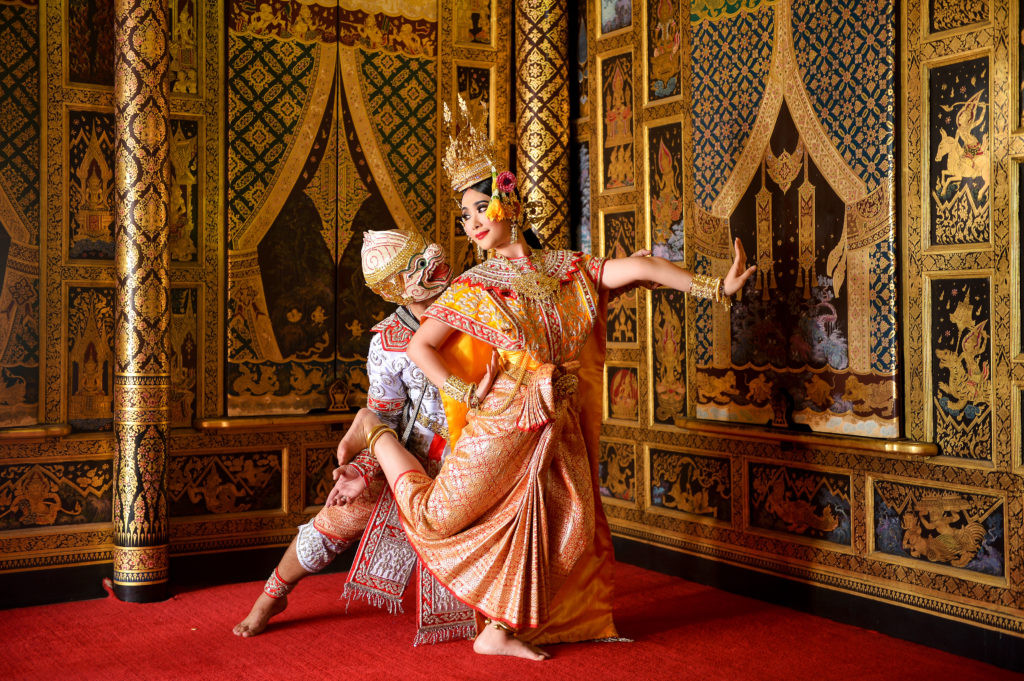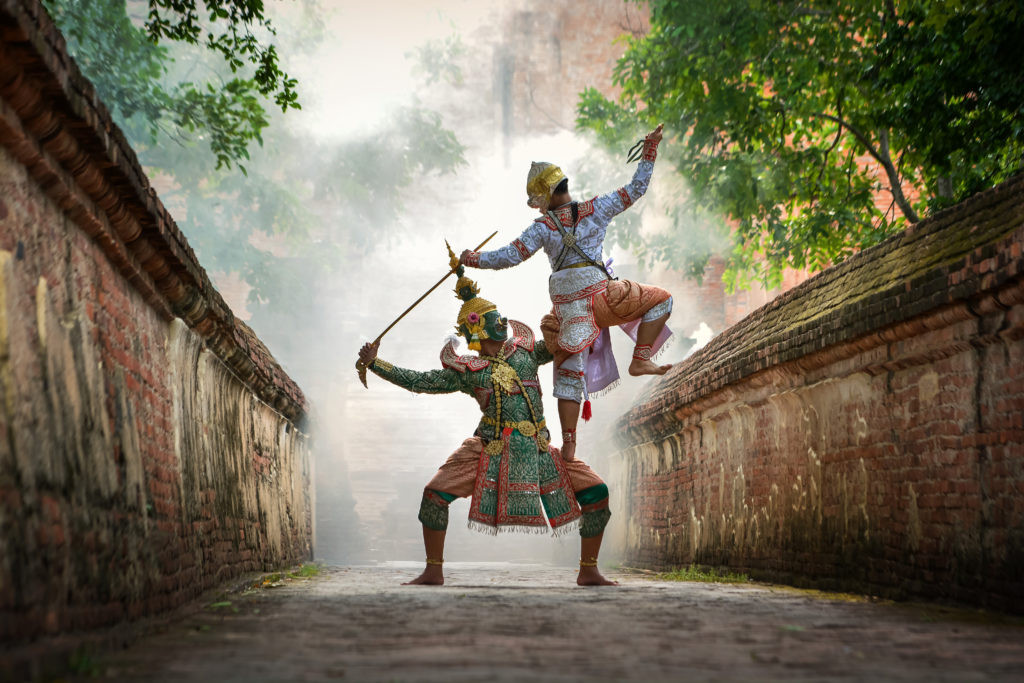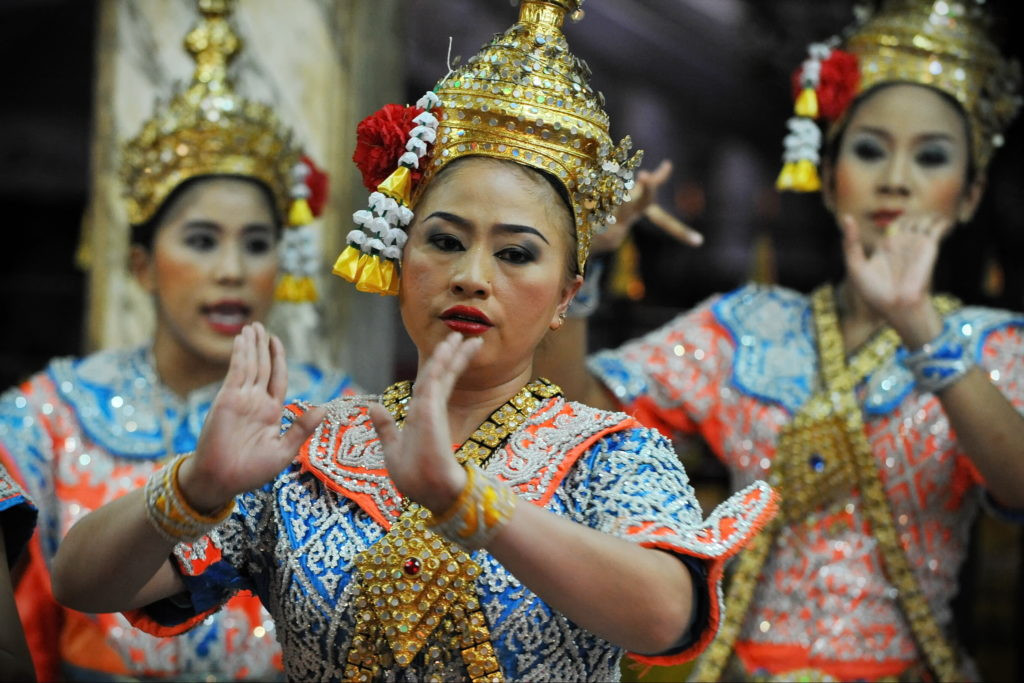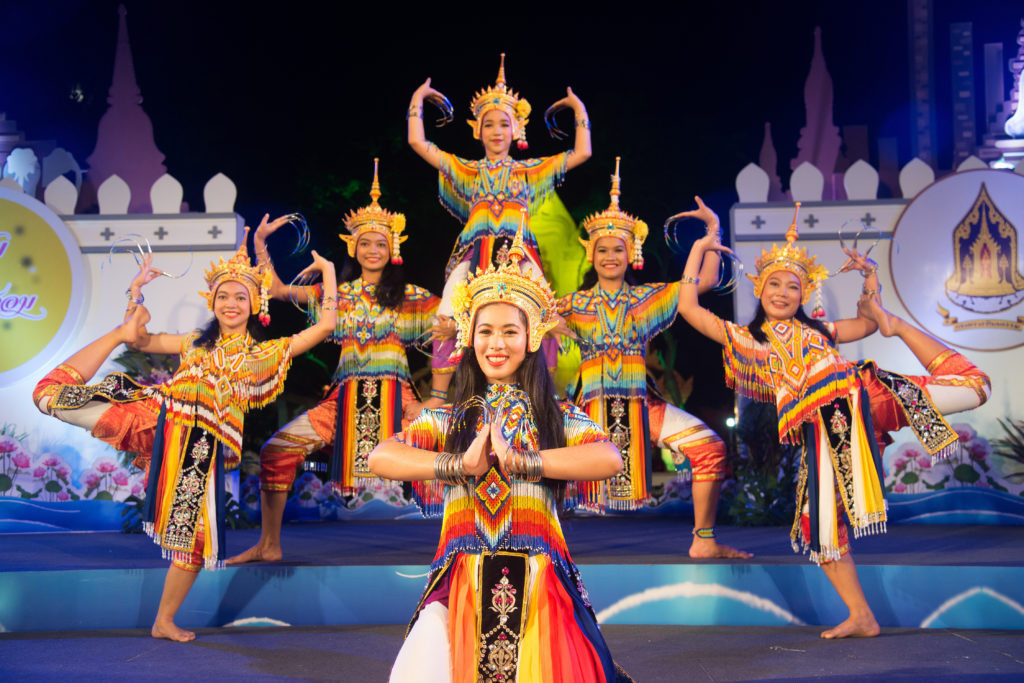Thai traditional dance, with its mesmerizing grace, ornate costumes, and captivating storytelling set to enchanting music, boasts a rich and vibrant history that continues to flourish today. On International Dance Day, we celebrate this exquisite art form and invite you to explore the world of Thai Dance, its historical roots, and diverse expressions.
Join Thailand Insider as we delve into the captivating universe of Thai Traditional Dance, uncovering its fascinating history and evolution.
A Glimpse into the History of Thai Dance
 Thai Traditional Dance | Thailand Insider
Thai Traditional Dance | Thailand Insider
Alt text: Dancers in vibrant gold costumes perform a traditional Thai dance, showcasing graceful hand gestures and poised postures.
As Thailand’s premier theatrical art form, Thai dance encompasses a spectrum of styles, notably Khon, Lakhon Nai, and Li-khe, each with unique characteristics. Thai traditional dance is a captivating blend of fluid, graceful movements, intricate and lavish costumes, and evocative music that together narrate stories and embody cultural values.
Initially drawing inspiration from Indian cultural influences, Thai dance underwent a significant transformation during the reign of Rama II. This era marked the infusion of strong national characteristics, leading to the distinct identity of Thai dance as we know it today. Historically, Thai dance was exclusive to the Royal Court until the 20th century when it gradually became accessible to the public. Folk dances, in particular, are deeply interwoven with the lives of the Thai people, reflecting daily life narratives, religious rituals, agricultural practices like rice planting and harvesting, and communal celebrations. These dances offer a window into the soul of Thai culture and its close connection to nature and spirituality.
Khon: The Majestic Masked Dance
 Khon Thai Traditional Dance | Thailand Insider
Khon Thai Traditional Dance | Thailand Insider
Alt text: A Khon dancer wearing an elaborate mask and headdress, part of a performance that tells epic stories through stylized movements.
Renowned as one of the most distinguished classical Thai dances, Khon is a UNESCO Intangible Cultural Heritage. Often gracing the stages of royal courts and grand theaters, Khon performances are characterized by masked dancers, narrators who chant and recite the story, and a traditional Piphat ensemble providing musical accompaniment. With a history spanning over 400 years, Khon evolved from ancient rituals and temple dances influenced by Hindu traditions, particularly the Ramayana epic, which forms the core narrative for many Khon performances. Typically performed by male dancers, Khon embodies a diverse cast of characters, including noble heroes, elegant heroines, powerful demons, and agile monkeys, each distinguished by unique masks, costumes, and movement styles. The dance movements are highly stylized and symbolic, conveying a wide range of emotions and actions through intricate hand gestures, postures, and steps.
Lakhon Nai: The Dance of Royal Maidens
 Lakhon Nai | Thailand Insider
Lakhon Nai | Thailand Insider
Alt text: Female Lakhon Nai dancers in ornate attire move in unison, showcasing the grace and synchronized beauty of this classical Thai dance form.
Traditionally performed by royal maidens within the inner courts of the palace, Lakhon Nai is considered the most refined and classical form of Lakhon dance. It flourished within the royal courts of Ayutthaya and Bangkok, becoming a symbol of grace and courtly elegance. While historically performed exclusively by women, modern adaptations of Lakhon Nai may include both male and female dancers without significant stylistic variations. Lakhon Nai is distinguished by its emphasis on graceful and fluid movements, particularly expressive hand gestures and arm movements. The upper body takes precedence, with dancers executing intricate hand and arm sequences that tell stories and convey emotions, while the lower body movements are more restrained and subtle. The synchronized movements of female dancers in group formations are a hallmark of Lakhon Nai, creating visually stunning and harmonious performances.
Li-khe: The Lively Folk Dance
 Rum Nora – A Southern Thai Folk Dance | Thailand Insider
Rum Nora – A Southern Thai Folk Dance | Thailand Insider
Alt text: Li-khe performers in colorful and glittering costumes engage in a dynamic and humorous folk dance, interacting with the audience.
A beloved folk dance throughout Thailand, Li-khe is characterized by its vibrant costumes, theatrical flair, and engaging humor. Li-khe performances often blend traditional dance with improvisational acting, creating a lively and interactive experience for the audience. The narratives typically revolve around themes of love, romance, and folk tales, often incorporating contemporary issues and social commentary into the storylines. Performers in Li-khe frequently utilize improvisation, adding comedic elements and witty banter to entertain the audience and create a spontaneous atmosphere. The costumes are elaborate and eye-catching, often featuring bright colors, sequins, and theatrical makeup, contributing to the festive and entertaining nature of Li-khe.
Thai Dance Across Borders: Preserving Tradition in the U.S.
The dedication to Thai dance extends beyond Thailand’s borders. Meet Viroj Sirironarong, a Thai dance master based in Los Angeles, who exemplifies the passion for preserving and sharing Thai dance in the United States. Viroj, a graduate in Thai classical dance from Thailand, immigrated to the U.S. in the early 1990s. Despite initially pursuing a career in hair design, his passion for Thai dance remained strong. He began performing in his free time, which eventually led him to establish a Thai Classical Dance troupe in Los Angeles. His primary goal was to provide a space for young Thai Americans to connect with their heritage through dance, fostering an appreciation for this art form among those living outside of Thailand.
Viroj’s teaching encompasses a range of Thai dance styles, from folk dances to the intricate Khon, complete with elaborate costumes. His teaching approach prioritizes instilling passion and appreciation for Thai culture in his students, focusing less on minute technical details in the initial stages and more on cultivating a love for the art form. Through his dedication, Viroj has played a vital role in ensuring the continuation of Thai dance traditions in the diaspora.
Thai Traditional Dance: A Living Heritage
Thai traditional dance remains a vibrant and evolving art form in Thailand today. Performance troupes, ranging from local village ensembles to national-level companies, ensure the continuous practice and evolution of these dance traditions. Most Thai universities offer degree programs in Thai performing arts and fine arts education, encompassing dance and Thai classical music, signifying the academic recognition and cultural importance of these art forms. In contemporary performances, there is a growing trend of incorporating modern elements to enhance the relatability of Thai dance for both international audiences and younger generations in Thailand. This fusion of tradition and innovation ensures that Thai dance remains dynamic and relevant in the modern world.
For those eager to witness the captivating history of Thai traditional dance firsthand in Thailand, Bangkok offers numerous venues to experience this art form. Notable theaters include Siam Niramit, renowned for its grand-scale productions featuring hundreds of dancers in spectacular costumes, and The National Theatre, which regularly stages classical dance performances, including Khon and Lakhon. These venues provide immersive experiences into the world of Thai dance, allowing audiences to appreciate its beauty, complexity, and cultural significance.
